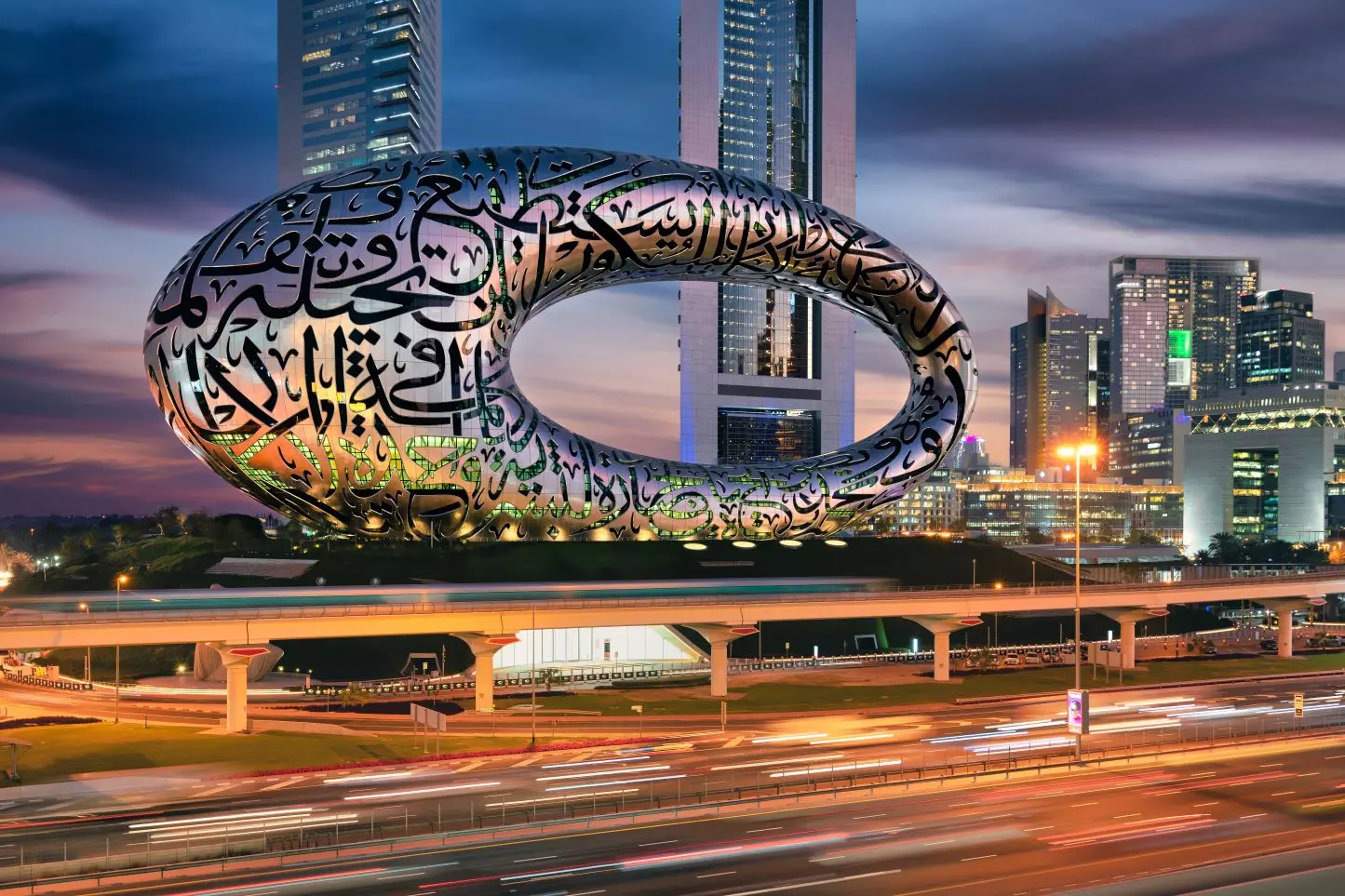Four exhibitions in as many cities, plus the recently inaugurated museum in Dubai, use multidisciplinary (and unconventional) approaches to bring the public’s attention to the fate of the planet and humanity. A topic of discussion between scientists, urban planners, innovators, architects, designers, artists and creative people. In addition to climate change, one of the recurring issues is mobility, observed from the different perspectives that could revolutionise transportation, both individual and collective.
Motion. Autos, Art, Architecture
Where&When: Guggenheim Museum Bilbao - Until 18 September 2022
Thirty-eight of the most innovative and spectacular automobiles of all time exhibited together with masterpieces of international art: this is the exhibition Motion. Autos, Art, Architecture at the Guggenheim Museum Bilbao. Based on an idea by architect Norman Foster, the exhibition traces the epic of the automobile, from the abandonment of horse-drawn carriages two centuries ago up to the imminent electric revolution. Each of the seven sections considers reflections of the ascent of four-wheelers from photography to film, painting and sculpture, emphasising the artistic dimension alongside the mechanical and technical one.
Space is also given to architecture: the success of the car has affected the design of the territory, as well as collective habits and customs. The final chapter (with AIC-Automotive Intelligence Center) looks at the future of mobility, with proposals for a new urbanity by students from 16 international schools of design and architecture.
FUTURES
Where&When: Arts and Industries Building (AIB), Washington - Until 6 July 2022
How would you like the future to be? After nearly two decades of closure, due to construction, the Arts and Industries Building, boasting 175 years of history, reopens with the exhibition-event FUTURES. Ambitious, experimental, with a signature design by architect David Rockwell, the exhibition embraces art, science, design, history and technology to give a glimpse of what the historical phase we are heading towards will be like. Unveiled in an area of almost 3,000 square metres divided into four thematic areas: Futures Past, Futures that Inspire, Futures that Unite, Futures that Work, are almost 150 prototypes, objects, installations and historical specimens. They range from Doing Nothing with AI, with which designer Emanuel Gollob invites visitors to wander with the mind, supported by artificial intelligence, to the Virgin Hyperloop's Pegasus capsule that could soon redefine times and modes in freight transport, at a speed of 670 miles per hour.
Museum of the Future
Where&When: Dubai
Open from 22 February 2022, the Museum of the Future of Dubai accompanies its visitors on a journey through time: the destination is the year 2071. Already from the outside, it seems able to keep its promise: its futuristic structure, designed by the Killa Design studio on behalf of the Dubai Future Foundation, is ahead of its time thanks to its enveloping toroidal shape, broken by an elliptical void, and its spectacular covering of 1,024 steel panels engraved with poems in Arabic. Crossing the threshold, there are seven floors with immersive environments, installations and areas for temporary exhibitions.
Audiences of all ages can "put themselves to the test" using their five senses in a variety of experiences, contexts and stimuli. Where will we live? How will we move from one place to another on the planet and in space? What fate awaits cities and urban space? Focusing on a mix of science, technology, virtual and augmented reality, artificial intelligence and human-computer interaction, the Motf opens a "door to the future" and to the challenges we will find there.
2050: HOW DO WE GET THERE? Cleaner, faster, safer sustainable mobility for everyone
Where&When: MUSE - Museo delle Scienze, Trento - Until 26 June 2022
By 2050, the EU aims to be climate neutral; by 2030, it intends to reduce greenhouse gas emissions from transport by 55%. Inaugurated for the Transport - Transit - Mobility thematic year proclaimed by the Euregio in 2021, 2050: HOW DO WE GET THERE? of the MUSE is designed by architect Mario Cucinella and with a narrative concept by Zeranta edutainment.
The exhibit raises awareness of the European mobility goals and makes it clear that individual contributions are indispensable, for example with a collective infographic-survey. The past, present and future of mobility and transport in Europe are addressed in the six thematic hubs, "linked" together by a maxi tatami woven with industrial waste and yarns regenerated from fishing nets. Immersive infographics address decarbonisation and the use of alternative energy sources, slow mobility, the "dream" of flying cars, partly initiated by the rise of drones, and the momentous shift that awaits infrastructure.
Our Future Planet
Where&When: Science Museum, London - Until 4 September 2022
Among the public initiatives promoted in parallel to COP26 Our Future Planet is an unprecedented exhibition for the UK. It traces a broad overview of solutions developed to capture, remove, store or reuse carbon dioxide from the atmosphere, in a survey of ongoing efforts in agriculture and conservation of ancient forests. With exceptional prototypes, above all Klaus Lackner's surprising Mechanical Tree, the exhibition also bears witness to the unexpected uses of CO₂ once stored and preserved: from vodka to building materials.
The visit is marked by the presentation of numerous systems, plants and machines: among these, the Climeworks Direct Air Capture, at the moment the only technology for "direct capture" in operation in Europe. Space, then, is given to projects under development, to which the final section is reserved, open to an analysis of the impact that these methodologies will have in collective life.
